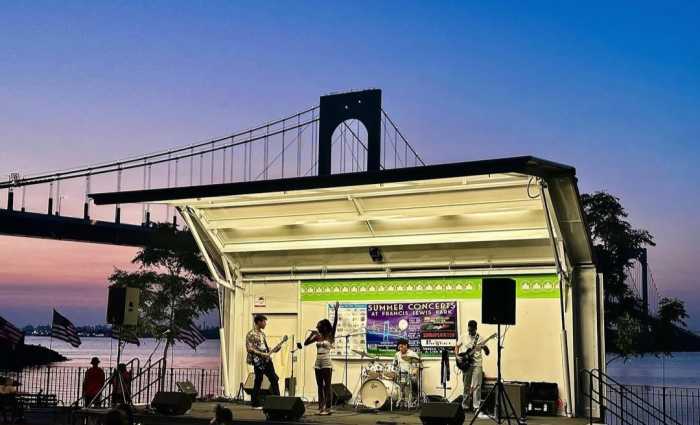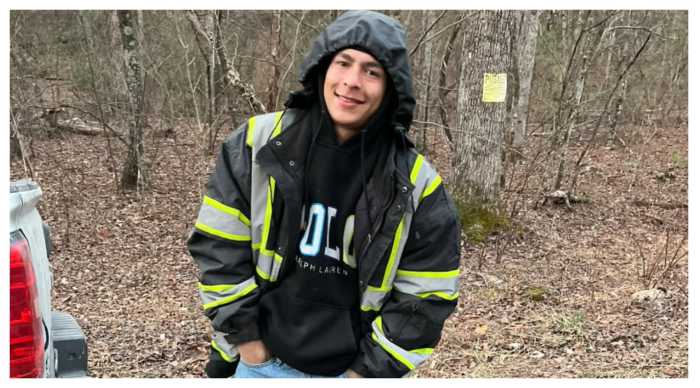Say Rock. Beach Line Key To Storm Recovery
Charging that improved transportation options are critical to the full recovery of Queens neighborhoods hardest hit by Hurricane Sandy, two Congressmen announced at a press conference in Ozone Park on Sunday, Mar. 24, they are calling on the federal government to help restore rail service on the defunct Rockaway Beach rail line.

Representatives Gregory Meeks and Hakeem Jeffries stated that they have sent a letter to U.S. Secretary of Transportation Ray LaHood asking for a portion of the multi-billion dollar Hurricane Sandy relief package for New York City toward revitalizing the former branch of the Long Island Rail Road (LIRR), which runs between Rego Park and Ozone Park.
The last time the Rockaway Beach branch accommodated train traffic was more than 50 years ago; the line was taken out of service by the LIRR in 1962. Part of the line was added to the subway system, and now carries part of the A line between Ozone Park and the Rockaways, but the remainder of the branch was left abandoned.
During the press event held at the corner of Liberty Avenue and 99th Street-in front of a segment of the defunct line-Meeks and Jeffries stated that bringing back rail service in some form to the branch would greatly reduce the commute times of residents in southern Queens and the Rockaways traveling to and from Manhattan daily, thereby boosting job creation and economic activity in communities that suffered greatly during last October’s superstorm.
On hand in support of the congressmen’s efforts were Assemblyman Phil Goldfeder-who previously advocated for the line’s restoration-as well as a host of transportation and community activists, many of whom live in the Rockaways. They include Community Board 14 Chairperson Dolores Orr and Democratic District Leader Lew Simon.
Meeks stated that the plan would be “an important step in the recovery and a bold step into the future of reliable transportation for the devastated areas of Rockaway and southern Queens.”
“Restoring the rail line would speed up the pace of recovery for residents and local businesses and create hundreds of jobs while laying the foundation for a transportation network that accommodates our future growth,” the congressman added.
“The time has come, and our job-in the context of preparing for a recovery-is to make sure that we restore the communities and enhance their strength and resilience,” Jeffries stated. “And the facts are clear: the residents of Rockaway and southern Queens have amongst the longest commute times in the city, perhaps rivaled only by some in Staten Island.”
“We’re committed to doing everything possible, despite the challenges, to bring the Rockaway Beach rail line back to life,” Jeffries said.
“We deserve options and we deserve access. We need the jobs, we need the economic development, we need a better environment. But we need the transportation,” Goldfeder said.
“If you try driving down Woodhaven or Cross Bay boulevards in the morning or afternoon, the streets are jammed,” he added, observing that restoring rail service on the Rockaway Beach branch would allow many drivers to leave their cars at home, thus reducing traffic on the main north-south roadway connecting Queens with the Rockaways.
According to Meeks and Jeffries, funding would first be sought to determine which type of mass transportation system would be best suited for the Rockaway Beach branch. The line previously connected with the LIRR’s Main Line, which terminates at Penn Station. Once the East Side Access project is completed, the Main Line will also connect to Grand Central Station.
The Rockaway Beach branch north of Rockaway Boulevard also bisects the elevated A line at Liberty Avenue in Ozone Park, the Atlantic Terminal branch of the LIRR below Atlantic Avenue, the elevated J/Z branch above Jamaica Avenue and the LIRR’s Montauk branch in Glendale.
Subway or light rail services were mentioned as options for the Rockaway Beach branch, but Meeks pointed out that he and other advocates were not limited to the types of rail options available. However, he stressed that the ideal solution would be high-tech and produce the least amount of noise.
Orr suggested that the restored train service would not only be beneficial for Rockaway and Southern Queens residents, but also make it easier for other New Yorkers to travel to and from the peninsula’s beaches-a popular destination during the summer.
“We want to get out of our cars,” Orr added. “The mayor wants us to get out of our cars, but we cannot do that unless we have viable, time-sensitive transportation.”
“This will improve the quality of life for the Rockaways, Broad Channel, Howard Beach and Ozone Park, as well as the property values. It will take traffic off Cross Bay Bridge, Cross Bay Boulevard and Belt Parkway,” Simon stated. “This can be a reality, and this reality will work. This will connect us to Long Island, all around the city and Queens to Queens.”
Last October, Hurricane Sandy washed out part of theAline south of the Howard Beach station, leaving the Rockaways disconnected from the rest of the subway system.
Repairs to the damaged line are still in progress, and the MTA expects to have full service restored by the summer.
In the meantime, the MTA established an intra-Rockaway H train shuttle running between Far Rockaway and Beach 90th Street. Residents traveling to other parts of the city must transfer to the Q52 or Q53 bus lines, which operate along Woodhaven and Cross Bay boulevards.
The stretch of the former Rockaway Beach branch running between Ozone Park and Rego Park was left abandoned and became overgrown in the five decades since the trains last traveled through the area.
While elected officials and advocates in southern Queens and the Rockaways have called for the train line to be revitalized, others in central Queens have called for the former train line to be transformed into a bike path/nature trail dubbed the “QueensWay.”
The state has provided a grant of over $460,000 to the New York Trust for Public Land to conduct a study of the project.
Still other groups, including No Way Queens Way and the Woodhaven Residents’ Block Association, have called for the line to be left as it is, charging that either option would negatively impact the security and quality-of-life for residents living in the immediate vicinity of the branch.

































